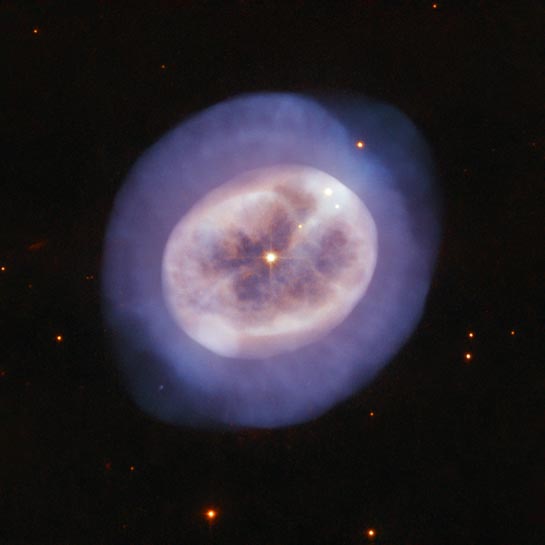
Planetary Nebula
RA 5h 42m 6.26s Dec 9° 5' 11.13"
Orion
12.8
28 arcsec
0.85 x 0.86 arcminutes
North is 103.8° left of vertical
ESA/Hubble & NASA, R. Wade
August 12, 2019
1997 image: N9738
ABOUT
THIS IMAGE:
Although it looks more like an entity seen through a microscope than a telescope, this rounded object, named NGC 2022, is certainly no alga or tiny, blobby jellyfish. Instead, it is a vast orb of gas in space, cast off by an ageing star. The star is visible in the orb's center, shining through the gases it formerly held onto for most of its stellar life.
When stars like the Sun grow advanced in age, they expand and glow red. These so-called red giants then begin to lose their outer layers of material into space. More than half of such a star's mass can be shed in this manner, forming a shell of surrounding gas. At the same time, the star's core shrinks and grows hotter, emitting ultraviolet light that causes the expelled gases to glow.
This type of object is called, somewhat confusingly, a planetary nebula, though it has nothing to do with planets. The name derives from the rounded, planet-like appearance of these objects in early telescopes.
NGC
2022 is located in the constellation of Orion (The Hunter). It was discovered
on December 28, 1785 by William Herschel.